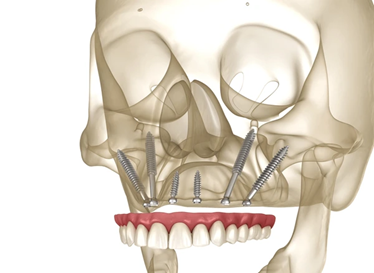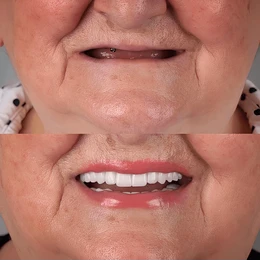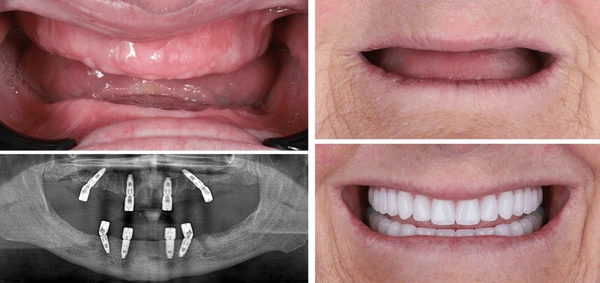When patients experience significant bone loss in the upper jaw, traditional dental implants often aren’t an option. That’s where zygomatic implants come in—an advanced solution that bypasses the need for bone by anchoring into the cheekbone. Designed specifically for cases of severe maxillary bone resorption, these implants open up new possibilities for patients who were once told they couldn’t receive permanent teeth.
Dr. Jaydev M., a highly acclaimed dentist in Hyderabad, explains:
“Zygomatic implants can often restore full function and aesthetics in patients others have deemed inoperable. They allow us to offer immediate, fixed teeth without the delays and discomfort of grafting.”
Having over 15 years of expertise, Dr. Jaydev M. specializes in full-mouth rehabilitation and complex implantology. With thousands of successful implant cases—including zygomatic implants for severe bone loss—he brings world-class precision to each treatment. Practicing at a state-of-the-art dental clinic in Jubilee Hills, Hyderabad, he’s known for restoring function and aesthetics for patients who have exhausted conventional options.
In this blog, we’ll explore what these implants are, who they’re ideal for, and how they compare to other advanced treatments.
What Are Zygomatic Implants?

Zygomatic implants are long, specially designed dental implants that anchor into the zygomatic bone (cheekbone) instead of the maxilla (upper jaw). Unlike traditional implants that rely on available jawbone volume, zygomatic implants use the denser cheekbone to provide strong, stable support for dental prosthetics—making them ideal in cases of advanced bone resorption.
These implants were developed to bypass the need for bone grafting procedures like sinus lifts or ridge augmentation. In many cases, patients can walk out with immediate fixed teeth, eliminating the need to wait months for healing.
Why are these implants considered a breakthrough for patients with no upper jawbone? Let’s explore the key reasons behind their growing success.
Why Are Zygomatic Implants Used in Extreme Bone Loss Cases?

- Bypass Bone Grafting:
Severe bone loss typically demands complex grafting, but zygomatic dental implants skip this step entirely by anchoring into the cheekbone.
- Immediate Function:
These implants often allow for same-day placement of prosthetic teeth, reducing treatment time and patient discomfort.
- High-Density Anchor Point:
The zygomatic bone offers dense, stable support—especially useful when the upper jaw is too weak for traditional implants.
- Reduced Treatment Time:
Without bone grafts, overall surgical and healing timelines are much shorter.
- Reliable in Complex Cases:
Zygomatic implants are effective for patients with maxillary defects from trauma, cancer, or long-term denture use.
Who Is a Candidate for Zygomatic Implants?

Wondering if you’re the right fit? Here’s what we look for:
- Patients With Severe Upper Jaw Bone Loss:
Especially those who’ve been told they lack bone for traditional implants.
- Denture Wearers Seeking Fixed Teeth:
Long-term denture use can lead to bone resorption—zygomatic dental implants offer a stable, fixed alternative.
- Patients Avoiding Bone Grafting:
Those unwilling or medically unfit for bone grafts may benefit from this graftless option.
- Individuals with Maxillary Defects:
Patients affected by trauma, congenital defects, or tumor resection often find zygomatic implants effective.
Patients with previously failed upper jaw implants may find lasting success with zygomatic alternatives.
Zygomatic Implant Procedure: Step-by-Step

- Initial Consultation:
A thorough evaluation using 3D imaging to assess bone structure and treatment planning.
- Pre-Surgical Planning:
Digital simulations help determine the angulation and position of the implants.
- Sedation or General Anesthesia:
Administered to ensure patient comfort throughout the procedure.
- Surgical Placement:
Implants are inserted through the upper jaw into the zygomatic bone via the sinus cavity.
- Provisional Prosthesis:
In most cases, patients receive a temporary fixed set of teeth immediately after surgery.
- Healing Period:
While healing varies, most patients resume normal activities within days.
- Final Prosthesis:
After complete osseointegration, the final, permanent bridge is custom-made and fitted.
What makes these implants worth considering over other options? Let’s uncover the key advantages that matter most to patients.
Benefits of Zygomatic Implants
- No Bone Grafting Needed: Save months of healing and reduce surgical risks.
- Immediate Teeth: Same-day restorations boost function and confidence.
- Durable and Long-Lasting: Anchored in dense cheekbone, offering exceptional longevity.
- High Success Rate: Global studies report a zygomatic implants success rate of 95% and above.
- Minimally Invasive for the Right Candidate: Despite the complex anatomy, the surgical approach can be smooth with an expert.
- Improved Quality of Life: Patients regain the ability to chew, speak, and smile without compromise.
Still weighing whether this is better than traditional implants or grafting? Let’s compare the most important differences so you can make an informed choice.
Zygomatic Implants vs. Other Options

While zygomatic dental implants can be more technically demanding, in experienced hands, they often deliver superior results—especially when bone is lacking.
Does the surgeon’s experience really matter in these complex cases? Let’s discover what to look for when choosing an implant surgeon.
Finding the Right Surgeon for Zygomatic Implants
- Specialised Training in Zygomatic Implantology
Zygomatic implants aren’t standard procedures. The dental surgeon should have focused, hands-on training from reputed international programs in this specific technique.
- Extensive Experience with Complex Cases
Given their use in severe bone loss or failed implant cases, your surgeon must have a strong background in handling complex full-arch restorations using zygomatic implants.
- Use of Advanced Digital Planning Tools
A dental clinic offering zygomatic treatment should have CBCT scans, 3D imaging, and digital planning software to ensure precision and safety.
- Multidisciplinary Expertise or Team Approach
Choose a dental surgeon who works with or is trained in multiple specialties to manage both surgical and aesthetic outcomes seamlessly.
- State-of-the-Art Surgical Environment
Zygomatic implant procedures must be done in sterile, hospital-grade facilities equipped for general anesthesia and post-surgery care.
- Transparent Communication and Documentation
A reliable surgeon will explain every step, share outcomes, and set clear expectations through real case references and documented plans.
- International Exposure or Affiliations
Surgeons affiliated with global implantology boards or trained abroad often deliver better results using advanced protocols and premium materials.
Dr. Jaydev M. is among the few Indian dental surgeons trained in zygomatic implantology in the UK. With thousands of complex smile restorations completed at his premium dental clinic in Hyderabad, he combines surgical precision, digital planning, and aesthetic expertise for exceptional results.
Frequently Asked Questions
1. How painful is the zygomatic implant procedure?
2. How long do zygomatic implants last?
3. Is general anesthesia necessary for the surgery?
4. What is the downtime after the surgery?
5. Are zygomatic implants suitable for elderly patients?
Reference links:
https://www.joms.org/article/S0278-2391(20)30100-2/fulltext
https://www.jomos.org/articles/mbcb/full_html/2023/04/mbcb230082/mbcb230082.html
Disclaimer: The information shared in this content is for educational purposes and not for promotional use.

